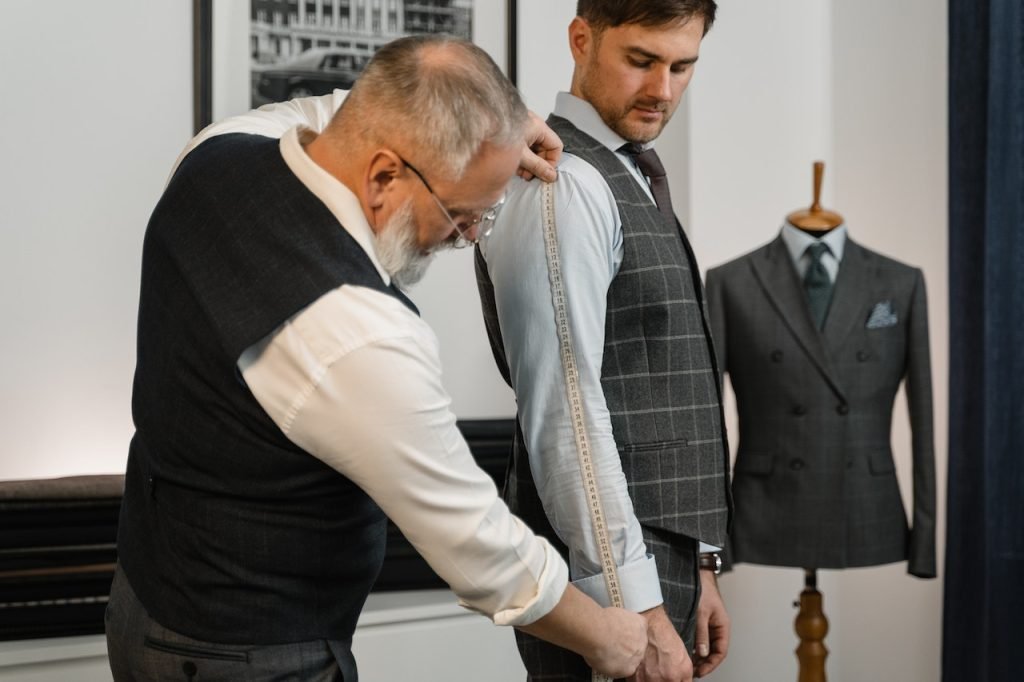Haute couture means fancy custom clothes. Rich people buy these special dresses and suits. Each piece costs more than a house.
What Makes Haute Couture Special?
These clothes are not normal fashion. Workers make every stitch by hand. No machines do the work.
Main Features
Each dress fits one person only. The tailor takes many measurements. They use the best fabrics money can buy.
The process takes months to finish. Skilled workers spend hundreds of hours on one piece. Every detail must be perfect.
Only a few shops can call themselves haute couture. They must follow strict rules set in Paris.
Where It All Started
Charles Worth opened the first couture shop in 1858. He worked in Paris, France. This city became the center of luxury fashion.
Important Dates
- 1858: First couture house opens
- 1868: Fashion rules are created
- 1945: New laws for couture shops
- Today: Still follows old traditions
Rich ladies wanted beautiful gowns for parties. Worth made each dress different. No two pieces looked the same.
How Couture Clothes Are Made
Meeting the Designer
Clients visit the fashion house first. They talk about what they want. The designer draws sketches.
The client picks fabrics and colors. They decide on the style together. This meeting can take hours.
Making the Pattern
Workers measure the client’s body. They make a paper pattern. This pattern fits only that person.
They test the pattern with cheap fabric first. The client tries it on many times. Workers fix any problems.
Hand Sewing
Real couture uses no sewing machines. Workers stitch everything by hand. This takes much longer than machine work.
They add beads, flowers, and other decorations. Each tiny detail needs careful work. One mistake means starting over.
Famous Fashion Houses
Chanel
Coco Chanel started this brand in 1910. She made simple, elegant clothes. Her little black dress became famous worldwide.
Today, Chanel still makes couture pieces. Prices start at 50,000 euros. Celebrity customers love wearing Chanel.
Dior
Christian Dior opened his shop in 1946. He created the “New Look” style. His dresses had tiny waists and full skirts.
Modern Dior dresses move like water. The fabric flows as models walk. Each piece looks like art.
Schiaparelli
This brand loves bold, weird designs. The founder worked with famous artists. Bright pink became their signature color.
Today’s designer makes clothes that shock people. They mix fashion with sculpture and painting.
Who Buys Haute Couture?
Rich Customers
Only very wealthy people can afford these clothes. Movie stars wear them to award shows. Royal families order special pieces.
Business owners buy couture for important events. Art collectors treat the clothes like paintings. Each piece becomes an investment.
Special Occasions
People wear couture to weddings, galas, and premieres. These are not everyday clothes. They need special care and storage.
Many pieces only get worn once or twice. Some customers collect them like art. The clothes hold their value over time.
Current Fashion Trends
2025 Styles
This year’s shows featured dark, dramatic looks. Designers used black fabric and bold shapes. Opera music inspired many collections.
Some brands focus on saving the environment. They use recycled materials when possible. Others add computer technology to old techniques.
New Ideas
Young designers bring fresh thinking. They mix old methods with new tools. Some use 3D printing for small parts.
Cultural styles from around the world inspire new looks. Japanese, Indian, and African traditions influence Paris fashion.
The Business Side
High Prices
Couture clothes cost between 50,000 and 500,000 euros. The price depends on how much work goes into each piece.
Rare fabrics cost thousands per meter. Skilled workers earn high wages. The Paris location adds to expenses.
Making Money
Most fashion houses lose money on couture. They make profits from perfume and handbags instead. Couture brings publicity and prestige.
Rich customers often buy other products too. A couture dress leads to purse and jewelry sales.
The Complete Experience
Personal Service
Couture customers get royal treatment. Private appointments happen in beautiful showrooms. Champagne and snacks are always served.
Fittings take place over several months. Clients can change their minds about details. The staff makes every adjustment requested.
After Purchase
The fashion house takes care of the dress forever. They clean and repair it when needed. Some pieces need special storage.
Insurance becomes important for expensive pieces. Owners must protect their investment. Security systems guard valuable collections.
Technology Meets Tradition
Modern Tools
Some couture houses use computers for design. 3D programs help create patterns. Digital cameras record each step.
Body scanners take perfect measurements. Video calls let customers see progress. Apps help manage appointments and fittings.
Keeping Traditions
Hand sewing remains the most important skill. Machines cannot replace human touch. Old techniques pass from master to student.
French laws protect traditional methods. Workers must learn classical skills first. Innovation comes second to craftsmanship.
Environmental Concerns
Going Green
Fashion houses worry about waste and pollution. They try to use sustainable materials. Local suppliers reduce shipping impacts.
Repair services extend dress lifespans. Recycling programs use old fabric scraps. Some brands offset their carbon footprint.
Social Good
Fair wages support skilled workers. Training programs teach young people. Community projects help local neighborhoods.
Diversity initiatives welcome different backgrounds. Educational partnerships share knowledge. Charity events raise money for causes.
Future of Haute Couture
New Customers
Younger rich people want couture now. Social media shows off luxury purchases. Global wealth creates new markets.
Technology companies partner with fashion houses. Smart fabrics respond to body temperature. LED lights create changing patterns.
Staying Relevant
Couture must change with times while keeping quality. Customers want both tradition and innovation. Sustainability becomes more important.
Virtual reality may change how people shop. Online fittings could replace some travel. Digital fashion shows reach global audiences.
Why Haute Couture Matters
These clothes represent the best human craftsmanship. Each piece shows what skilled hands can create. The tradition connects us to fashion history.
Couture pushes boundaries in design and technique. New ideas start here then spread to regular fashion. The influence reaches clothing stores worldwide.
For customers, owning couture means having something nobody else has. The personal attention and perfect fit cannot be copied. Each dress tells a unique story.
Conclusion
Haute couture will always have customers who want the best. Money cannot buy the experience anywhere else. The combination of art, craft, and luxury creates something special. The future of couture depends on training new craftspeople and finding new customers. This world of luxury fashion continues to fascinate people everywhere. Whether you can afford it or just dream about it, haute couture represents fashion at its finest.






